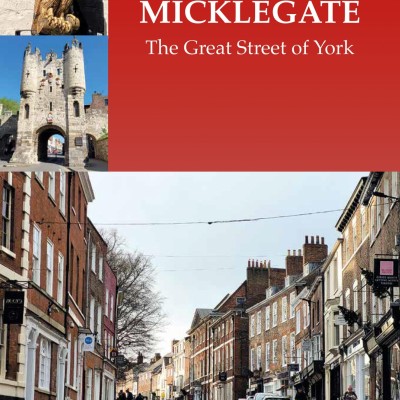11th July 2024
Recording changes in South Bank at the Chocolate Works, York
Group Members John Stevens and Mave Morris review their research into the changes that have taken place on the Terry’s site.
One important role that local historians can perform is to record the present environment and the changes taking place within it. Future generations of local historians will then be able to call on this archive to understand better what has happened in their area. This is why we set out in 2016 to document and photograph the area where we lived. Now, in 2024, most of the comprehensive redevelopment of the Terry’s site is complete. The last piece of the jigsaw is the so-called Terry’s car park site, which is shortly expected to be developed by McCarthy & Stone as a care home.
The Terry’s site covers the area south of Campleshon Road, running down the western side of Bishopthorpe Road towards the racecourse car parks and Bustardthorpe allotments. The main site, covering some 10 hectares, includes the conserved and adapted historic factory buildings, as well as a large area of new housing. A wider area of land, totalling a further 10.45 hectares, lay south and east of Bishopthorpe Road. This was owned by Terry’s and included in the original sale to the developers, Henry Boot, but remains undeveloped.

This map shows the extent of the Terry’s land holdings that were included in the sale, and were covered by the subsequent planning activities.
After several false dawns, in April 2013, the site was acquired by Henry Boot Developments. Henry Boot undertook to redevelop the southern part of the site with its Listed Buildings. The northern part of the site was sold on to David Wilson Homes, part of the Barratt’s Group, for mainly residential new build development.
Henry Boot teamed up with two other companies, to take forward its part of the development, focusing on the re-purposing of the Listed Buildings:
-
PJ Livesey, heritage experts, who focused on bringing the 5-storey main factory building back to life as apartments. They later remodelled the Clock Tower and Boiler House too.
-
Springfield Healthcare Group, who developed the old Headquarters Building.
The Time Building was converted for office use and, more recently the Liquor Store has been adapted to provide offices, a dental suite and café/restaurant. The last piece of this part of the development to be built is called Brainkind – a residential facility for the support and treatment of people with acquired brain damage, occupying the site south of The Residence.
David Wilson Homes constructed the new residential neighbourhood on the northern part of the site, a mix of town houses and apartment blocks. This area covers about 5.5 hectares and provides around 229 dwellings.

Bayldon Square with the Chocolate Orange sculpture.
From a local historian’s point of view this is just the latest in a series of quite dramatic changes that have affected this area. From 1926 until 2005 the site was occupied by Terry’s imposing confectionery works and all its ancillary uses. Terry’s had moved here when the business outgrew its earlier site in Clementhorpe. Bishopthorpe Road was a completely greenfield site where the company could build a modern working environment from scratch.




